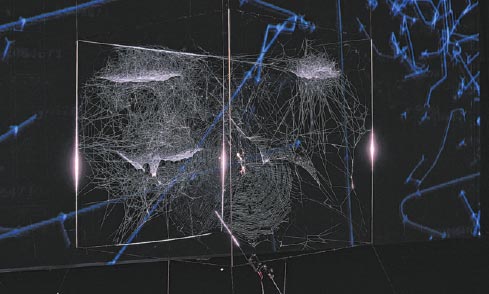 |
|
Our Interplanetary Bodies at the Asia Culture Center, 2017. [Photo/Swan Park, Asia Culture Centure] |
According to Saraceno, these are "social spiders"-meaning they build new structures on top of existing webs, rather than destroying them. "It's like me going to your house," he explains. "This is built by different spiders with different degrees of social ability. They collaborate to build these webs."
Saraceno says that during the exhibition, the spider in her habitat and the sound of her movement is amplified through a microphone, which generates vibration of the dust. Audiences can listen to the sounds of the spider and admire the movement of the dust projected on a large wall. "You can hear a cosmic concert," he says.
Can humans actually learn how to live like spiders? Saraceno tried to answer this question with his Cloud Cities series, which is a concept of a modular city floating above the clouds. One of the works, On the Roof: Cloud City, was exhibited at the Metropolitan Museum of Art in New York; currently, the large-scale interactive installation In Orbit, a net structure containing five air-filled spheres suspended some 25 meters above the ground, allowing people to climb on them like spiders, is on long-term display at the K21 Art Collection in Duesseldorf, Germany.
Along the lines of Cloud Cities are his famous floating sculptures of the Aerocene project. Saraceno says that these sculptures are propelled by sunlight, which are prototypes for the way humans can travel in the future-without burning fossil fuels or any other forms of energy that damage the earth. Nine gigantic spherical sculptures have been brought to Asia for Our Interplanetary Bodies.
"What I like about Aerocene is that it's a choreography of movement," explains the artist. "We get the heat from the Sun and I speculate about the idea of being able to travel around the world with this heat. In future, it's not about burning anymore."